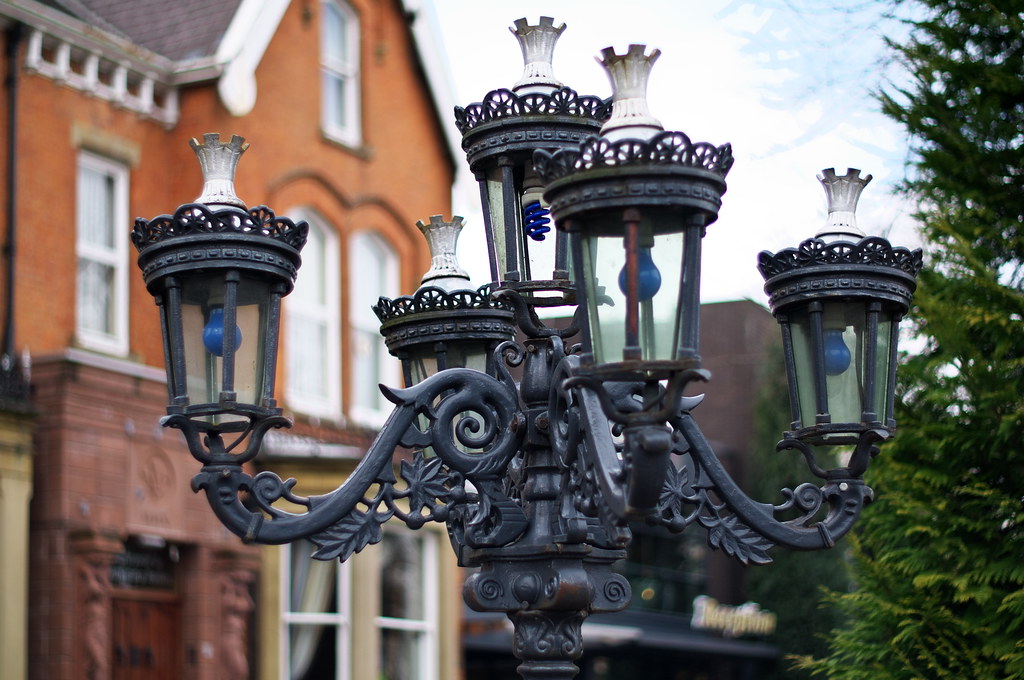I had a chance to capture some pictures with my Jupiter-9 during my lunch time walk today. There were two setups and I cycled through all the aperture settings from f/2 to f/16. In the first setup I used center weighted metering only and in the second setup I did both center weighted and spot metering. All of the pictures were taken in Av mode. I didn't read through Steve's post about using M mode vs. Av mode before my walk.
Question: why would the camera calculate a different exposure between the two modes? Doesn't the same amount of light hit the same sensor?
Before I go nuts posting pictures let me make a couple of observations. The camera seemed to underexpose at large apertures. f/8 was the ideal aperture. Spot metering shifted all the exposures to be faster and therefore all the shots are underexposed.
Here is a shot my first setup taken with my iPhone. I am taking a picture of a small stump on the left and my K-30 on a tripod is on the right. The wind was blowing too hard for flower shots. Stumps don't tend to sway in the wind much.


I forgot to take my measuring tape with me but according to the lens I was 2.5 meters away.
I focused once wide open and then snapped one photo at each aperture. It would be crazy for me to post everything here so I'll pick a few. There was no post processing done to these JPGs. I used Silky Pix to simply develop the shots as-is.
Here's a picture at f/2.

Soft, hazy, and underexposed. Shutter speed is 1/4000 at ISO 100. Center weighted metering as stated before. Skip on to f/8 and the picture looks a little overexposed.

The shutter speed was 1/125 at ISO 200.
Next I took a closer focus shot of a bird house I found on the premises which I placed on a stone flower bed.

The distance now to my focus point is 0.9 meter according to the lens. Remember, in this setup I took both center weighted and spot. Here's center weighted at f/2.

Once again the picture is soft, hazy, and underexposed. Shutter speed is 1/4000 at ISO 100. Now let's go up to f/8.

It's a little bright so maybe a tad overexposed but I like it. Details seem more vivid and contrast is tasty. Shutter speed was 1/250 at ISO 400.
Then I switched over to spot metering. Much more underexposed! Here's the same birdhouse at f/2 with spot metering.

Shutter speed is 1/6000 at ISO 100. Jumping ahead to f/8...

Shutter speed is 1/250 at ISO 200.
You may notice that I played around a bit with the sensitivity and this was on purpose. The shutter speeds were getting to be under 1/50 and slower at the smaller apertures. I was afraid of a smeared background from the wind blowing the lavender in the background. There was also a shadow cast on the birdhouse from a tree that was behind me. Oddly enough the shadow never appeared in any of the shots.
So, what can I extract from this experiment? I still think there is too much light bouncing around the sensor cavity. Maybe the light is bouncing back from the sensor to the rear element and back again? This double whammy of light makes the sensor think that there is even more light so the shutter speed goes up and up and up. At f/8 the total light is much less so maybe there is less reflection and the metering system doesn't freak out. Or, is the metering function expecting a different sensitivity curve from the lens?
It'll be a few days before I can return to this spot to try some other combinations of metering.


 Similar Threads
Similar Threads 























 Post #28 by stevebrot
Post #28 by stevebrot








